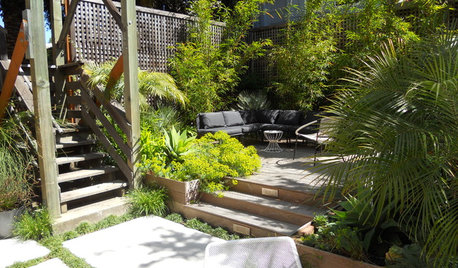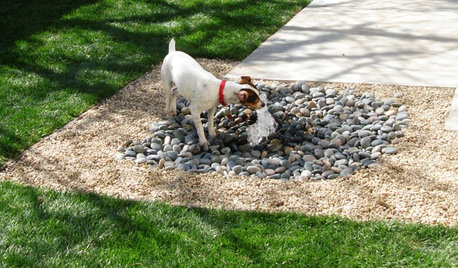I know you`ve probably read and answered these kind of questions a hundred times but I`ve read through the last 5-6 pages and gotten a lot of info but I`m still confused on a couple things.
I`ve been ammending my soil since I started the garden, which was about 5-6 years ago. I have had to work through sections slowly, so it has been a slow but ongoing process. We have fairly thick clay soil that dries to an almost impenetrable cover in the hottest months of summer. Except in one garden bed which is very sandy. I think previous owners had a play area with some sand which was later made into a garden. There is soil, but there is also a lot of playground type sand mixed in. Plants are growing but I am trying to add as much organic material as possible.
I haven`t had a soil test done and I don`t want to get TOO scientific with exact measurements of various minerals :) I want to make the soil better, slowly, but I`m not the kind of person who needs to get completely scientific with all the details!
I mixed in some peat into the clay areas at the beginning, trying to get more air into the soil. Recently I have mostly been buying sheep or cow manure in bags from the garden center (we don`t have our own composter yet, that is something I`d like to get but probably not for a couple years at least). Sometimes I get Triple Mix. I shovel it onto the soil and then work it in a little bit. Probably about half an inch of manure to cover the soil, then dug in and turned over with the shovel. Nothing fancy.
First question: is one application of manure like this per year enough to properly fertilize perennial plants. Would I need more manure, or different products. Do I need to do more than just dig it into the soil and turn it over.
Second question: would the same practice be acceptable in a vegetable garden. I remember the big spinach E-Coli scare they had several years ago from using poorly composted manure on the spinach. I have been wary of using manure in the edible beds ever since ... am I worrying for nothing. I assume that the store bought manure is composted enough for veggies (as long as there is no hugely noticeable manure odor) ... or is there something else I should look at instead.
Third question: Black Earth. I am still confused over what Black Earth is for. Is it to be used instead of manure, or in addition to manure. Is it for flowers, veggies or either. Should I mix it into the soil beds in the garden. Mostly in stores around here, I see manure (sheep or cow), peat moss, top soil, black earth, woodchip mulch ... not really anything that is labelled as `compost` so I`m not sure what the best thing to buy for ammending would be until I`m able to make my own compost.
Fourth question: I read that black earth isn`t great in pots because it will compact. This is just after I planted 6 big pots full of tomatoes. Can I leave them for the summer or is this a big enough issue to warrant digging them up and repotting them. If so, what should I use in these pots. I didn`t think that potting mix would have enough nutrients for large tomato plants. Or should I mix some cow manure in with the black earth in the pots.
I intend to put down a layer of manure (or whatever is suggested) over the soil this summer, some bloodmeal (for nitrogen, to replenish anything lost by any woodchips that get worked into the soil by accident) and bone meal (for the healthy root systems), a layer of newspaper (to keep the weeds down and to break down into the soil over time), and then a layer of cedar chip wood mulch over top of the newspaper. I have been waiting to mulch until the beds were mostly planted (so I wouldn`t have to move it aside all the time) and this will be the summer. (I am trying to find a way to get some rotting hay or straw to use as a mulch in the veggie gardens so I don`t have to use woodchips there). We do not get enough grass clippings to effectively use as a mulch. I do rake the leaves into the garden in the fall to break down over the winter, but they don`t last to be used as a spring or summer mulch. Does this order and approach sound good.
I`m sure these questions have been asked before, but I have read through a bunch of threads and I`m still a little fuzzy. I`d appreciate any answers or suggestions. I believe that feeding the soil is feeding the plants, I don`t want to ammend just a planting hole but I want to slowly make the soil in the entire garden better. Thanks so much :)















Kimmsr
RpR_
Related Discussions
charcoal soil ammendment
Q
Newbie gardener with soil question
Q
Soil Ammendments Question
Q
Another newbie with a couple of questions
Q
toxcrusadr
RpR_
wayne_5 zone 6a Central Indiana
luckygal
Kimmsr
pnbrown
czigaOriginal Author
Kimmsr
toxcrusadr
Laurel Zito
RpR_
czigaOriginal Author
west_texas_peg
Kimmsr
jolj
RpR_
toxcrusadr
RpR_